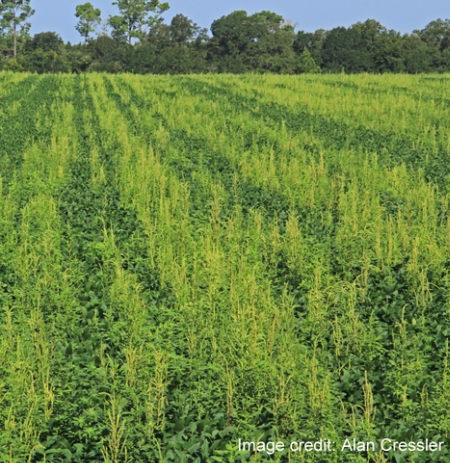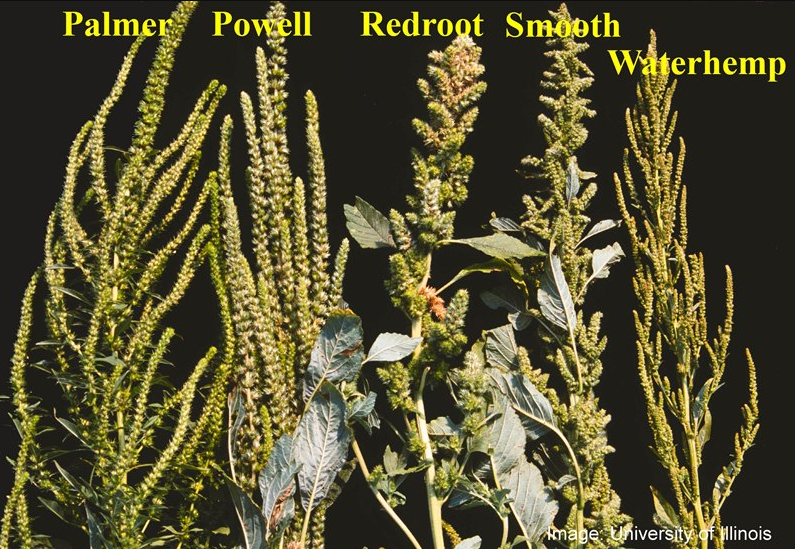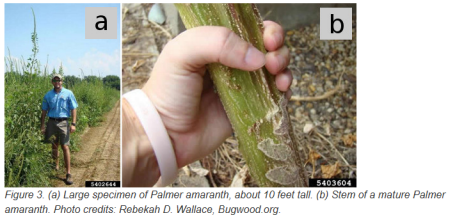Click below to listen to my 2 min. Garden Bite radio show: Palmer Amaranth
Audio PlayerAll above and below ground parts of the plant must be destroyed. Additionally, no transportation, propagation, or sale of these plants is allowed. Failure to comply may result in enforcement action by the county or local municipality. YIKES! They are not kidding around!

The dreaded Palmer amaranth, a runaway weed threatening ecological systems has found a new pathway. In September of 2016, Palmer amaranth (Amaranthus palmeri) was initially discovered and confirmed in Minnesota.
First let’s take a look at the differences in amaranths…. this link will give you a lot more detail!

It had been in isolated populations in several counties. It’s also invaded Wisconsin. And now, the Minnesota Department of Agriculture (MDA) has found a new route for the invasive weed to… through grain and seed screenings used as feed.

After an investigation into a Palmer amaranth find in Redwood County, the MDA determined the weed found its way into a soybean field through cattle manure. The cattle had been fed screenings from contaminated sunflower seed. And, as we know, what goes in, must come out. Unfortunately, the seed remains viable.
The MDA is encouraging farmers, especially those that have manure from feedlots spread on their land, to look for Palmer amaranth and report suspect plants.
This nasty weed can grow 2 to 3 inches a day, typically reaching 6 to 8 feet, or more, in a season. Left uncontrolled, a single female Palmer amaranth plant typically produces 100 to 500,000 seeds. It is resistant to multiple herbicides and can cause substantial yield losses.
More information from Extension – a cooperative education system


